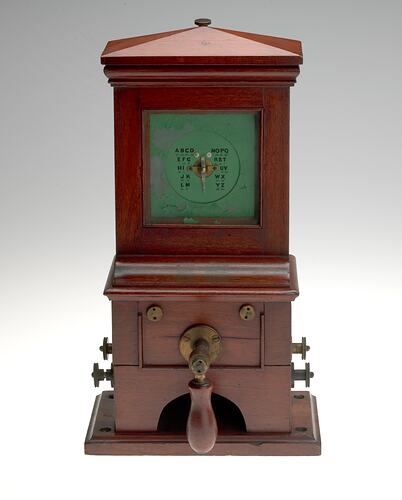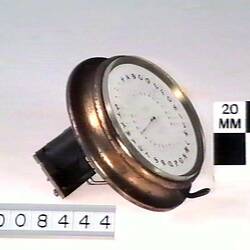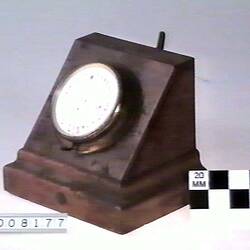Charles Wheatstone, a pioneer in electric telegraphy, was born in 1802 in Gloucester, England, where his father was a music seller. At the age of four Charles and his family moved to London. Charles was educated in various schools and was an excellent student. After purchasing a book by Volta on electricity, he began conducting his own electrical experiments.
Charles developed interests in a wide range of topics including sound and its transmission, and making improvements and modifications to musical instruments. In 1834 he became Professor of Experimental Physics at King's College in London, and in 1835 he began experiments in electric telegraphy. In 1838 he announced his invention of the stereoscope, a device for displaying three-dimensional images.
In November 1837 Wheatstone formed a partnership with William Cooke to develop telegraphic inventions and they soon took out a joint patent on Wheatstone's five-needle telegraph. The five-needle telegraph was used by railways from 1837 onwards, and in 1845 Wheatstone introduced the single and double needle telegraphs. In 1840 he patented his first alphabetical telegraph and in 1858 the 'Wheatstone ABC telegraph' was patented. In the meantime, Wheatstone continued his research in other fields of electrical engineering and physics.
Wheatstone's next significant telegraphic invention was the automatic transmitter. In this device, the message to be transmitted was encoded as a pattern of holes on paper tape. When the tape was fed through the transmitter the pattern was converted into a string of electrical impulses which were then sent along the telegraph wire. This allowed messages to be transmitted much faster than was previously possible using a manual morse key.
In 1864 Wheatstone advised the Atlantic Telegraph Company on the construction of the 1864 and 1865 trans-Atlantic submarine telegraph cables.
Wheatstone was knighted in 1868, and died in 1875 while on a visit to Paris.
More Information
-
Keywords
-
Authors
-
Article types








